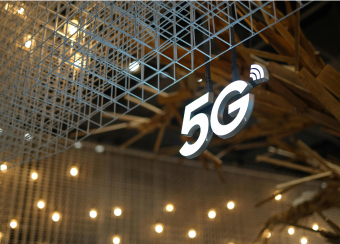

Telecommunications, the exchange of information over a distance, has come a long way since its humble beginnings. From the invention of the telegraph in the 19th century to the dawn of 5G technology in the 21st century, the evolution of telecommunications has revolutionized the way we communicate, connect, and interact with the world around us. In this comprehensive guide, we’ll take a journey through time, exploring the key milestones, innovations, and advancements that have shaped the telecommunications industry into what it is today.
The telegraph, invented in the early 19th century, marked the beginning of long-distance communication. Developed by Samuel Morse in 1837, the telegraph used electrical signals to transmit messages over wires, enabling near-instantaneous communication across vast distances. The invention of Morse code, a system of dots and dashes representing letters and numbers, further facilitated communication and paved the way for the expansion of telegraph networks around the world.
The invention of the telephone by Alexander Graham Bell in 1876 revolutionized communication by allowing people to converse in real-time over long distances. The telephone replaced the telegraph as the primary means of communication, offering a more intuitive and personal way to connect with others. The widespread adoption of telephone networks in the late 19th and early 20th centuries brought people closer together and transformed the way businesses operated and families stayed in touch.
The invention of radio and television in the early 20th century further revolutionized communication by enabling the broadcast of audio and visual content to a mass audience. Radio broadcasting, pioneered by Guglielmo Marconi and others, allowed people to listen to news, music, and entertainment programs from the comfort of their homes. Television, introduced in the 1920s, brought moving images and live broadcasts into households around the world, becoming a central source of information and entertainment for millions of people.
The advent of the internet in the late 20th century marked a paradigm shift in telecommunications, enabling the instantaneous exchange of information and the creation of a global network of interconnected computers. Developed initially for military and academic purposes, the internet quickly evolved into a ubiquitous tool for communication, commerce, and collaboration. The invention of the World Wide Web by Tim Berners-Lee in 1989 further democratized access to information, making it accessible to anyone with an internet connection.


The introduction of mobile phones in the 1980s and 1990s revolutionized communication once again, enabling people to communicate while on the move. Mobile phones, initially bulky and expensive, became smaller, lighter, and more affordable over time, leading to widespread adoption around the world. The development of digital cellular networks, such as GSM and CDMA, allowed for more efficient and reliable mobile communication, paving the way for the era of smartphones and mobile internet.
As we enter the 21st century, we stand on the brink of a new era of connectivity with the emergence of 5G technology. Promising faster speeds, lower latency, and greater capacity, 5G has the potential to revolutionize telecommunications once again, enabling new applications and services that were previously unimaginable. From autonomous vehicles to smart cities to virtual reality, 5G technology holds the promise of transforming industries and enhancing the way we live, work, and play.
From the invention of the telegraph to the dawn of 5G technology, the evolution of telecommunications has been a journey of innovation, ingenuity, and transformation. Each milestone, from the telephone to the internet to mobile phones, has brought us closer together, enabling us to communicate, connect, and collaborate in ways that were once unimaginable. As we look to the future, the emergence of 5G technology holds the promise of a new era of connectivity, ushering in a world of possibilities and opportunities. So let us embrace the future of telecommunications with excitement and optimism, as we continue to push the boundaries of what is possible and shape the world of tomorrow.